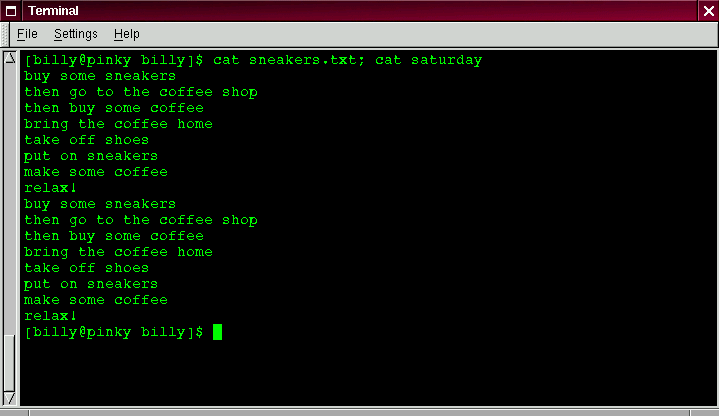
There's a neat twist to output redirection which allows you to add new information to the end of an existing file. Similar to when you used the > symbol, you tell your shell to send the information somewhere other than standard output.
However, when you use >>, you're adding information, rather than replacing it.
The best explanation is a demonstration, so let's take two files which have already already been created -- sneakers.txt and home.txt -- and join them by using the append output symbol. We want to add the information in home.txt to the information already in sneakers.txt, so we type:
cat home.txt >> sneakers.txt
Now let's check the file by typing:
cat sneakers.txt
And there it is -- with the contents of home.txt at the end.
What we were saying when we typed that command was, ``append the output from the file home.txt to the file sneakers.txt.''
By appending the output, we've saved ourselves a step or two (and a bit of disk clutter) by using existing files, rather than creating a new file.
Compare the results of the files sneakers.txt and saturday now, and you'll see that they're identical. To make your comparison, just type:
cat sneakers.txt; cat saturday
The contents of both files will be displayed - first sneakers.txt, then saturday (as shown in Figure 33).
Tip: Remember that when you append output, you've got to include the double greater-than symbols (>>). Otherwise, you'll end up replacing the very file to which you want to append information!

(By the way, if you're curious about the use of the semi-colon in that last command, read on. We'll cover that later in this chapter.)
Summary: To append output, use two greater-than symbols (>>). For example: cat addthisfile >> tothisfile.